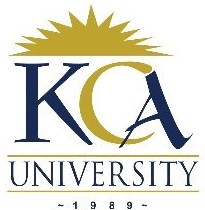
UNIVERSITY EXAMINATIONS 2017/2018
EXAMINATION FOR THE DEGREE OF BACHELOR OF SCIENCE IN
INFORMATION TECHNOLOGY/ BACHELOR OF SCIENCE IN
INFORMATION AND COMMUNICATIONS TECHNOLOGY
BIT 3107/BCT 3101: WIRELESS NETWORKS TECHNOLOGIES
FULL TIME/PART TIME/DISTANCE LEARNING
DATE: DECEMBER, 2017 TIME: 2 HOURS
INSTRUCTIONS: Answer Question One & ANY OTHER TWO questions.
QUESTION ONE [30 MARKS]
a) Briefly discuss the design considerations in cordless and wireless local loop
telecommunications. 6 Marks
b) The use of wireless technologies in networking is justified by various situations. List and
explain at least three (3) of these situations. 6 Marks
c) Why do we need spread spectrum in conserving bandwidth? 4 Marks
d) Discuss the UNII-1, UNII-2 and UNII-3 in relation to IEEE 802.11a wireless LAN
communication highlighting the frequency bands for each, the number of channels and
key characteristics. 6 Marks
e (i) What can the categorization of communication satellites be based on?
3Marks
(ii) What can the categorization of satellite orbits be based on? 3 Marks
f) Voice has frequency ranging from (approximately) 0 to 4000 Hz. To reconstruct the
signal when digitized, at what rate should samples be taken? 2 Marks
QUESTION TWO [20 MARKS]
a) Explain why the telecommunications industry and its customers are shifting towards
digital transmission. 5 Marks
b) Because the amount of frequency spectrum available for mobile cellular use was limited,
efficient use of the required frequencies was needed for mobile cellular coverage. In
modern cellular telephony, rural and urban regions are divided into areas according to
specific provisioning guidelines. Deployment parameters, such as amount of cell-splitting
and cell sizes, are determined by engineers experienced in cellular system architecture.
Provisioning for each region is planned according to an engineering plan that includes
(i) cells,
(ii) clusters,
(iii) frequency reuse, and
(iv)handovers
Discuss briefly each of these concepts. 8 Marks
c) State the following basic features of GSM:
(i) Access method 1 Mark
(ii) BS transmission band 1 Mark
(iii) MU transmission band 1 Mark
(iv) Channel bandwidth 1 Mark
(v) Users per channel 1 Mark
d) What kind of access technology do WLANs use and why? 2 Marks
QUESTION THREE [20 MARKS]
a) In the 2G mobile phone network, a user engaged in a conversation has an outgoing
message on one channel and an incoming message on another channel.
(i) State the UPLINK frequency band and DOWNLINK frequency band as used in
the GSM900 system in Kenya. 2 Marks
(ii) A user is communicating on channel 893.6 MHz uplink channel. Determine the
downlink channel. 2 Marks
b) With any communications medium, the received signal will differ from the
transmitted signal due to various transmission impairments. Discuss any three of these
impairments. 6 Marks
c) (i) What 2 fundamental properties does an antenna provide to the wireless system?
2Marks
(ii) Describe how multipath interference occurs and its effect on wireless
communications. 4
Marks2
(iii) Explain how diversity antenna systems solve the problem of multipath
interference. 4 Marks
QUESTION FOUR [20 MARKS]
a) State the causes of the following errors and how to prevent them.
(i) White noise 2 Marks
(ii) Crosstalk 2 Marks
(iii) Attenuation 2 Marks
(iv) Intermodulation noise 2 Marks
(v) Jitter 2 Marks
b) Describe the association process (active process) which a mobile client uses to connect to
a wireless Access Point. 6 Marks
c) Discuss briefly the how RFID (Radio Frequency Identification) operates. 4 Marks
QUESTION FIVE [20 MARKS]
a) List and briefly describe at least four (4) prevalent applications of Bluetooth.
8Marks
b) Briefly list and discuss any four (4) advantages of Satellite communication over the other
types of communication. 4 Marks
c) State any four features of Bluetooth network. 4 Marks
d) Distinguish between “piconet” and “scatternet” as used in Bluetooth technology.
